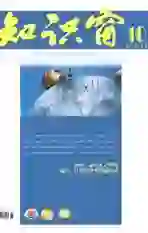五年级上册《Unit 4 What can you do? 》Story time教案设计
2016-12-13林晓
林晓
一、教学目标
首先,让学生通过阅读趣味故事,复习与巩固本单元的核心句型“What can you do?”“I can...”“Can you...?”“Yes,I can.”“No,I can't.”其次,让学生通过图片和上下文理解句子意思和故事内容,并能够在教师的引导下朗读、表演和复述故事;最后,引导学生学习各种技能。
二、教学重点和难点
本课的教学重点是:第一,理解故事情节;第二,组织学生朗读和表演故事。
教学难点是理解田鼠如何机智地逃脱蛇的魔掌,以及复述故事内容。
三、教学过程及设计意图
1.Warm-up
(1)Chant
笔者引导学生开展了对话活动,选择一位学生扮演小鸟。
Students: “Bird, bird, what can you do?”
Bird:“I can fly, I can fly.”
Students:“ Fly away, fly away.”
(2)Free -talk
笔者和学生开展了对话活动,帮助学生复习相关句型。
Teacher:“Can you...?”Students:“Yes, I can./No,I can't.”
Students:“Can you...?”Teacher:“Yes, I can./No,I can't.”
通过生动活泼的动物表演和朗朗上口的对话形式,笔者不仅有效激发了学生的学习兴趣,激活了学生已有知识经验,还将故事中的生词“away”巧妙地渗透其中,让学生反复朗读,为后续理解和诵读故事做好了铺垫。
2.Presentation
Teacher:“Do you think I can draw animals in one stroke on the blackboard?”
笔者用简笔画出一只老鼠和一条蛇。
Teacher:“When a rat comes across a snake, what will happen?”
笔者利用简笔画吸引学生注意,引出故事角色,设置悬念,激发学生阅读兴趣。
Teacher:“What can you see in Picture 1? Where are they? What does the snake want to do? What is the tasty food?”
笔者引导学生观察文章图片1,让学生自由表达各自猜想,并通过阅读验证猜想。同时,为后续故事阅读和理解抛砖引玉。
Teacher:“It's dangerous. What can the rat do?”
Watch the cartoon without subtitles and answer:“Can the rat sing? Can the rat dance? ”
以生动活泼的动画形式呈现故事,有利于学生从整体上把握故事大意。笔者以问题为驱动,促使学生积极视听故事,在视听故事过程中学会提取关键信息。
Teacher:“The rat can sing and dance for the snake. Can the snake let it go ? What will happen then?”
Students read Picture 5 and answer the questions:“ Can the rat really swim or not? Why does the rat say ‘No?(Because he wants to ____.) Can you guess the meaning of‘throw?”
文中的图5是故事关键,也是教学难点。教师要引导学生深入阅读,通过连环提问促使学生积极思考,让学生在回答和解决问题的过程中,理解田鼠的机智之处。教师还可以引导学生通过看图猜测和联系上下文理解生词“throw”的意义,渗透学法。
Teacher:“Will the snake throw the rat into the lake? Can the rat swim away? Watch the cartoon and discuss the end of the story. Is the snake clever? ”
笔者通过视听动画、阅读文本,让学生从整体上理解故事,然后通过讨论故事的结局,关注学生情感和内在体验,体现了以学生为主体的思想。
3.Practice and consolidation
Read after the tape twice. Read in roles. Act out the story in pairs.
笔者通过引导学生进行多种形式的、有梯度的朗读练习,并辅以科学有效的朗读指导,帮助学生突破了教学难点。通过故事表演,帮助学生内化语言输出,发展语用能力。
Put the pictures in orders.
图画排序可进一步了解学生对故事大意的了解情况,内化整篇故事,将故事情节组合成紧密联系的整体,为后续的活动做铺垫。
Look at the 6 pictures and retell the story. Then finish the poem.
笔者要求学生看图复述故事,创作小诗,创新运用语言,将内化的语言输出,边说边演,体验英语学习的快乐。
4.Summary
Do you like the story? Which animal do you like better? Why?Can you give a title to the story?
笔者要求学生总结故事核心内容,发展思维能力,并让学生给故事命名,将自主权交给学生,让他们理解同一事物的多样性。
Tell the students“move your brain when in trouble, you will find a way.”“it is always good to have more skills.”
在教学中,笔者渗透思想和情感教育,让学生明白“身处险境不要慌张,多动脑,会想出办法的”“技多不压身”。
5.Homework
Read and act out the story with your friends.
(作者单位:江西省婺源县紫阳三小)endprint
